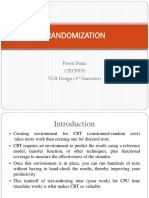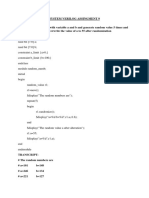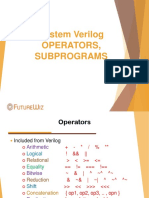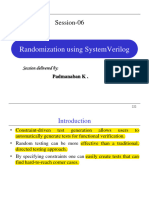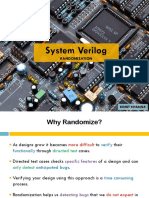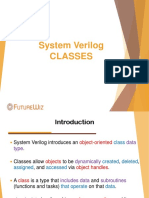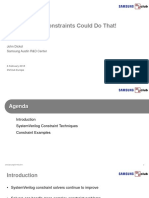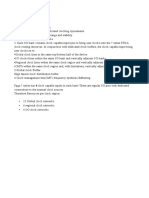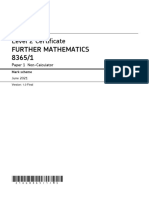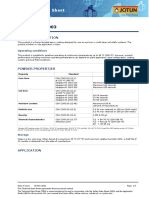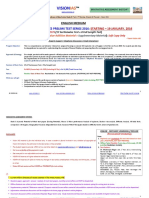0% found this document useful (0 votes)
73 views49 pagesSystemVerilog Randomization Guide
This document discusses constrained randomization in SystemVerilog. It provides examples of using $random, $urandom_range, and the randomize() function to generate random numbers within specified ranges. It also discusses randomizing properties of class objects using rand and randc variables, and controlling randomization with rand_mode. Pre_randomize and post_randomize functions allow adding functionality before and after randomization.
Uploaded by
Srinivas AluvalaCopyright
© © All Rights Reserved
We take content rights seriously. If you suspect this is your content, claim it here.
Available Formats
Download as PDF, TXT or read online on Scribd
0% found this document useful (0 votes)
73 views49 pagesSystemVerilog Randomization Guide
This document discusses constrained randomization in SystemVerilog. It provides examples of using $random, $urandom_range, and the randomize() function to generate random numbers within specified ranges. It also discusses randomizing properties of class objects using rand and randc variables, and controlling randomization with rand_mode. Pre_randomize and post_randomize functions allow adding functionality before and after randomization.
Uploaded by
Srinivas AluvalaCopyright
© © All Rights Reserved
We take content rights seriously. If you suspect this is your content, claim it here.
Available Formats
Download as PDF, TXT or read online on Scribd
/ 49






